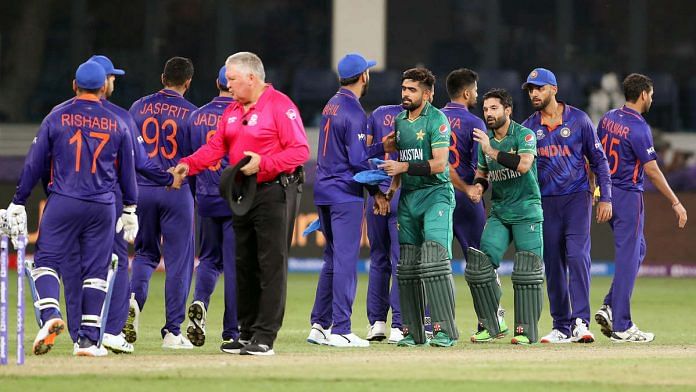Thank you dear subscribers, we are overwhelmed with your response.
Your Turn is a unique section from ThePrint featuring points of view from its subscribers. If you are a subscriber, have a point of view, please send it to us. If not, do subscribe here: https://theprint.in/
This article is about an idea to change the bowling regulations used in the limited overs formats (both 50-overs ODI and T20) to improve the game. Full disclosure, I am not a big fan of changing regulations often since I feel it makes the game more complicated to follow for fans and indeed takes away something from the traditions of the game.
Having said that, I feel that we need to address the imbalance between bat and ball as well as the worrying disconnect between the 3 main formats of the game to ensure a healthy and bright future for all the formats that we enjoy today. Let me explain the proposed idea first and then I will discuss the benefits of these changes.
Limited overs cricket has regulations for the maximum number of overs that can be bowled by any single bowler, namely 10 overs in ODI and 4 overs in T20. My proposal is to change the regulations for the maximum number of overs that can be bowled, i.e. get rid of the 10 overs and 4 over maximums in ODI and T20 respectively and have the following regulations instead.
50-overs ODI cricket
- No bowler can bowl more than 25 overs
- No set of two bowlers can bowl more than 35 overs combined
- No set of three bowlers can bowl more than 40 overs combined
- No set of four bowlers can bowl more than 45 overs combined
T-20 cricket
- No bowler can bowl more than 10 overs
- No set of two bowlers can bowl more than 14 overs combined
- No set of three bowlers can bowl more than 16 overs combined
- No set of four bowlers can bowl more than 18 overs combined
So, how does this proposal improve the limited overs game?
1. Gives good bowlers their due:
A great batsman can bat throughout the innings and almost single-handedly win games but a great bowler cannot do so. Why be unfair to bowlers? The above overs regulations mean that every team still needs at least 5 different players bowling (the same as it is now) but does not mandate that lesser bowlers have to bowl as many overs as the best bowler is allowed.
2. Gives fans of good bowling their money’s worth:
Batting and bowling are both skills that lovers of our great game admire in equal numbers. Yet, fans of a great bowler fundamentally get to watch their idol for a lesser amount of time than the fans of a great batsman in limited overs cricket.
3. Gives fielding captains more options:
How often have we seen a hapless captain run out of options when trying to stop a great batsman like Gayle with part-time bowlers? Because this proposal allows a captain to ask the best bowler on the day to bowl more overs, it ensures that the contest between bat and ball is an even one for longer. The overs by a lesser bowler can be limited to 1/5th the maximum number that the best bowler could theoretically bowl on any given day, i.e. a lesser bowler could bowl as few as 5 overs while the best bowler could bowl up to 25 overs in an ODI.
4. Higher quality cricket:
As fans we all know that some of the best moments in cricket are when a great batsman is attacking a great bowler who is trying to get him out. Rather than allowing a batting team to strategize to play out a great bowler's 10 overs quietly and attack the rest of the attack, these regulations mean that there is little respite for batsmen throughout the innings.
5. Reduces the disconnect between the 3 formats of cricket:
I feel that these regulations would make teams select players capable of surviving and scoring against top quality bowling for a period of time rather than necessarily go for lesser players who take advantage of the fact that they do not get to face the best opposition bowlers for long. Ultimately this proposal would go a long way towards ensuring that most players do not gravitate only towards one format of the game (usually T20).
6. Helps less populous cricketing nations:
Cricket is played by some nations with small populations (such as New Zealand and Sri Lanka) who have had lopsided attacks over the years. Remember how Hadlee or Murali from one end and significantly lesser bowlers from the other end was commonplace when those bowling greats were playing. By allowing a great bowler to shoulder more of the burden these regulations would make those less populous countries more competitive overall.
These pieces are being published as they have been received – they have not been edited/fact-checked by ThePrint.
Also read: Win toss, win match — how luck with the coin mostly pre-decided outcome, made T20WC a bit farcical

